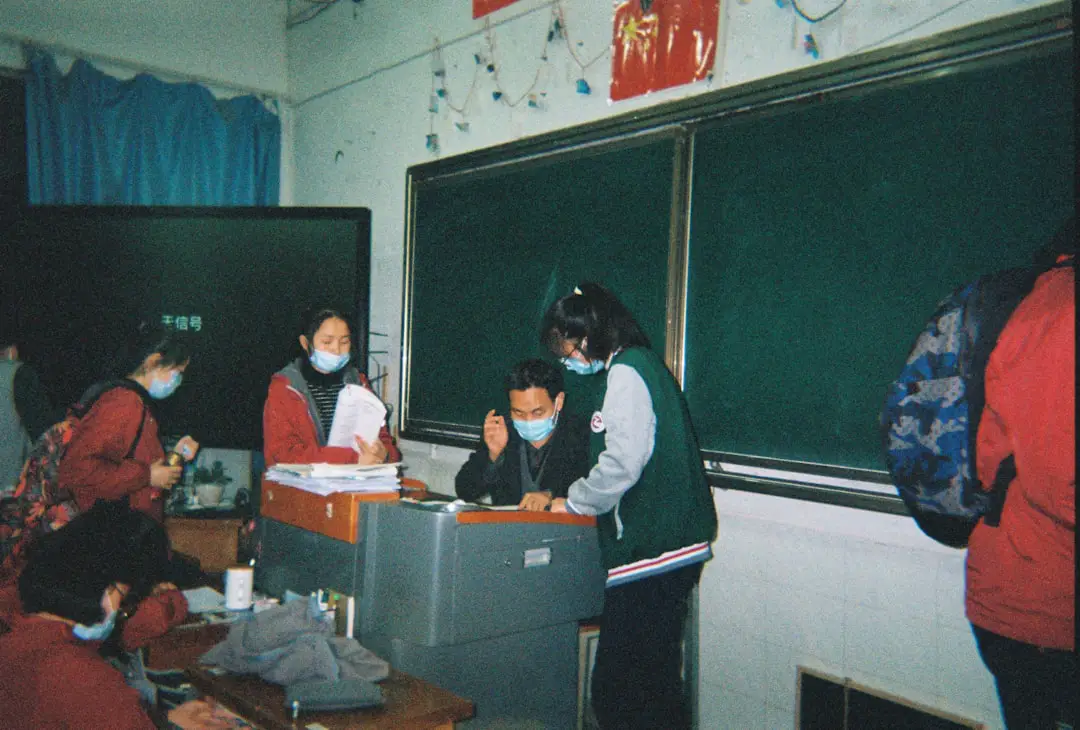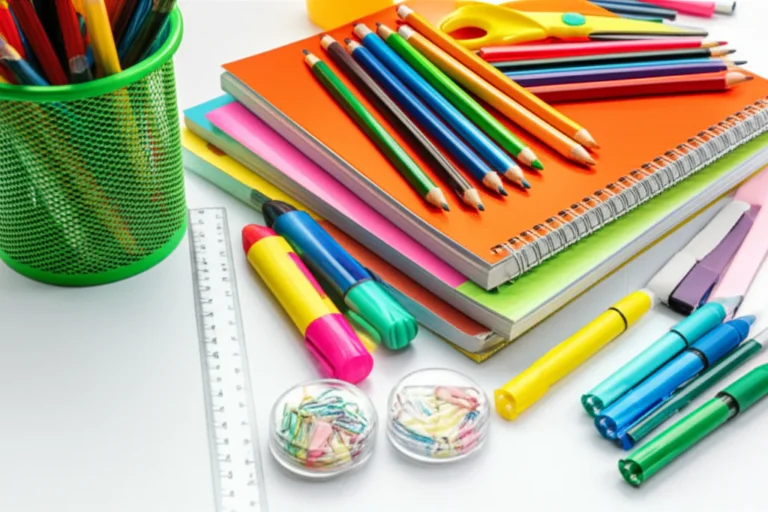Support our educational content for free when you purchase through links on our site. Learn more
🍎 Teachers Need More Than Apples: 7 Ways to Support Educators in 2025
![Thanksgiving Day lesson at Whittier. Photograph by photographer Frances Benjamin Johnston, [1899 or 1900]. Library of Congress Prints & Photographs Division.
Photograph shows African American children learning about Thanksgiving, with model log cabin on table, Whittier Primary School, Hampton, Virginia.
https://www.loc.gov/item/97507246/ by Teacher Supply Store Thanksgiving Day lesson at Whittier](https://www.teachersupplystore.org/wp-content/uploads/2025/06/photo-1580117287456-e8e476093446cropentropycstinysrgbfitmaxfmjpgixidM3w0NDMxOTh8MHwxfHNlYXJjaHw1fHx0ZWFjaGVyJTIwaW4lMjBjbGFzc3Jvb20lMjBzdXJyb3VuZGVkJTIwYnklMjBzdHVkZW50cyUyMGFuZCUyMGVkdWNhdGlvbmFsJTIwc3VwcGxpZXN8ZW58MHx8fHwxNzQ5NTYxNjkwfDAixlibrb-4.1.jpg)
Imagine a teacher, exhausted after a long day, grading papers late into the night. They’re passionate about their students, but the workload is overwhelming. This is the reality for many teachers today, facing unprecedented challenges like burnout, shortages, and lack of resources. This article explores the critical needs of teachers in 2025, offering practical solutions and strategies to support them. We’ll delve into the impact of teacher burnout, the growing teacher shortage, and the importance of providing adequate resources and support. We’ll also explore the role of technology in teacher support and offer practical tips for parents, administrators, and the community to show their appreciation for educators. Join us as we explore how to create a more supportive and sustainable environment for teachers, so they can continue to inspire and educate future generations.
Key Takeaways
- Teacher burnout is a serious issue that requires a multifaceted approach to address. Schools can reduce workload, increase support, provide adequate resources, and reduce the emphasis on high-stakes testing.
- Teacher shortages have a significant impact on students, leading to larger class sizes, unqualified teachers, and program cuts. Addressing this issue requires increasing teacher salaries, improving working conditions, and promoting teaching as a profession.
- Teachers need support and resources to be successful, including professional development, mentoring, collaboration, technology, materials, time, and mental health resources.
- Technology can play a significant role in supporting teachers by automating tasks, improving student engagement, personalizing learning, and increasing access to resources.
- Teacher appreciation should go beyond a single day. Show your appreciation for teachers by writing thank-you notes, donating to their classrooms, supporting teacher advocacy groups, speaking up for them, and being a positive influence.
👉 Shop Classroom Supplies on:
- Amazon: https://www.amazon.com/s?k=classroom+supplies&tag=bestbrands0a9-20
- Walmart: https://www.walmart.com/search?q=classroom+supplies
- Target: https://www.target.com/s?searchTerm=classroom+supplies
- Staples: https://www.staples.com/buy/classroom-supplies-0afz52c
- Teacher Supply Store™: https://www.teachersupplystore.org/category/classroom-supplies/
👉 Shop Instructional Technology on:
- Amazon: https://www.amazon.com/s?k=instructional+technology&tag=bestbrands0a9-20
- Walmart: https://www.walmart.com/search?q=instructional+technology
- Best Buy: https://www.bestbuy.com/site/searchpage.jsp?st=instructional+technology
- Teacher Supply Store™: https://www.teachersupplystore.org/category/instructional-technology/
Table of Contents
⚡️ Quick Tips and Facts
Teacher Burnout: A Growing Crisis
The Impact of Teacher Shortages on Students
The Importance of Teacher Support and Resources
How to Support Teachers: Practical Tips and Strategies
The Role of Technology in Teacher Support
Teacher Appreciation: Beyond the Words
Conclusion
Recommended Links
FAQ
Reference Links
⚡️ Quick Tips and Facts
Teachers are the backbone of our education system, and they play a crucial role in shaping the minds of future generations. But right now, teachers are facing unprecedented challenges. Teacher burnout, shortages, and lack of resources are putting immense pressure on educators, impacting their well-being and their ability to effectively teach.
Here are some quick facts about the challenges teachers face:
- Teacher burnout is a significant problem. A 2022 study by the National Education Association found that 55% of teachers reported feeling stressed, and 44% reported feeling burned out.
- Teacher shortages are on the rise. The U.S. Department of Education reports that there were over 80,000 teacher vacancies in the 2021-2022 school year.
- Teachers often lack adequate resources. A 2023 survey by the National School Boards Association found that 75% of teachers reported that they did not have access to the resources they needed to effectively teach.
What can we do to support teachers? It’s time to step up and show our appreciation for the hard work and dedication of educators. We can start by understanding the challenges they face and offering practical solutions.
What Supplies Do Teachers Love? 75 Must-Haves for 2025 🎒 https://www.teachersupplystore.org/what-supplies-do-teachers-love/
Teacher Burnout: A Growing Crisis
Teacher burnout is a serious issue that can have a devastating impact on educators’ mental and physical health, as well as their ability to teach effectively. Burnout is characterized by feelings of emotional exhaustion, cynicism, and a sense of inefficacy. It’s often caused by a combination of factors, including:
- High workload: Teachers are often expected to work long hours, including evenings and weekends, to prepare lessons, grade papers, and meet with parents.
- Lack of support: Teachers may feel isolated and unsupported by their administrators, colleagues, or the community.
- Limited resources: Teachers may lack access to the materials, technology, and support they need to do their jobs effectively.
- High-stakes testing: The pressure to improve test scores can lead to burnout, as teachers feel like they are constantly being evaluated.
- Lack of autonomy: Teachers may feel like they have little control over their curriculum or teaching methods.
The consequences of teacher burnout can be significant:
- Decreased job satisfaction: Burnout can lead to a loss of passion for teaching and a desire to leave the profession.
- Increased absenteeism: Burnout can lead to teachers taking more sick days or leaving the profession altogether.
- Lower student achievement: Burnout can lead to teachers being less engaged in their work, which can negatively impact student learning.
- Increased stress and anxiety: Burnout can lead to increased stress and anxiety, which can have a negative impact on teachers’ overall well-being.
What can be done to address teacher burnout?
- Reduce workload: Schools can reduce teacher workload by providing more support staff, such as paraprofessionals and teaching assistants.
- Increase support: Schools can provide more support for teachers by offering professional development opportunities, mentoring programs, and access to mental health resources.
- Provide adequate resources: Schools can provide teachers with the resources they need to do their jobs effectively, such as technology, materials, and supplies.
- Reduce the emphasis on high-stakes testing: Schools can reduce the pressure on teachers by focusing on student learning and development, rather than just test scores.
- Increase teacher autonomy: Schools can give teachers more control over their curriculum and teaching methods.
It’s important to remember that teacher burnout is a serious issue that requires a multifaceted approach to address. By working together, we can create a more supportive and sustainable environment for teachers, so they can continue to inspire and educate future generations.
The Impact of Teacher Shortages on Students
Teacher shortages have a significant impact on students, both in the short term and the long term. When there aren’t enough teachers to fill all the positions, schools may have to:
- Combine classes: This can lead to larger class sizes, which can make it more difficult for teachers to provide individualized attention to students.
- Hire unqualified teachers: Schools may be forced to hire teachers who don’t have the necessary qualifications or experience, which can negatively impact student learning.
- Cut programs: Schools may have to cut programs, such as art, music, or physical education, to save money.
The impact of teacher shortages on students can be far-reaching:
- Lower student achievement: Students may not receive the same quality of education when there are fewer teachers or when teachers are overworked.
- Increased stress and anxiety: Students may feel more stressed and anxious when they are in larger classes or when they have teachers who are not qualified.
- Limited access to resources: Students may have limited access to resources, such as technology, materials, and supplies, when schools are facing budget cuts.
- Increased inequality: Teacher shortages can disproportionately impact students from low-income families and students of color, who are more likely to attend schools with fewer resources.
What can be done to address teacher shortages?
- Increase teacher salaries: Higher salaries can make teaching a more attractive profession and help to retain experienced teachers.
- Improve working conditions: Schools can improve working conditions for teachers by providing more support staff, reducing workload, and offering more professional development opportunities.
- Increase funding for education: Increased funding can help schools to hire more teachers, provide more resources, and improve working conditions.
- Promote teaching as a profession: Schools and communities can promote teaching as a rewarding and valuable profession to attract more people to the field.
Addressing teacher shortages is a complex issue that requires a multifaceted approach. By working together, we can ensure that all students have access to a high-quality education.
The Importance of Teacher Support and Resources
Teachers need support and resources to be successful. This includes:
- Professional development: Teachers need opportunities to learn new skills and stay up-to-date on the latest research and best practices.
- Mentoring: Teachers need mentors who can provide guidance and support, especially during their early years in the profession.
- Collaboration: Teachers need opportunities to collaborate with colleagues and share ideas and best practices.
- Technology: Teachers need access to the latest technology to enhance their teaching and engage their students.
- Materials and supplies: Teachers need access to the materials and supplies they need to effectively teach their students.
- Time: Teachers need adequate time to plan lessons, grade papers, and meet with parents.
- Mental health resources: Teachers need access to mental health resources, such as counseling and support groups, to help them cope with the stress of the job.
When teachers have the support and resources they need, they are better able to:
- Engage their students: Teachers can create more engaging and effective lessons when they have access to the latest technology and materials.
- Meet the needs of all learners: Teachers can better meet the needs of all learners when they have access to professional development and support.
- Reduce stress and burnout: Teachers can reduce stress and burnout when they have access to support, resources, and time.
- Improve student achievement: When teachers are supported and have the resources they need, they are better able to improve student achievement.
Supporting teachers is an investment in the future. By providing teachers with the support and resources they need, we can ensure that all students have access to a high-quality education.
How to Support Teachers: Practical Tips and Strategies
There are many ways to support teachers, both big and small. Here are some practical tips and strategies:
For parents:
- Volunteer in the classroom: Offer to help with classroom tasks, such as reading to students, grading papers, or organizing materials.
- Donate supplies: Schools are always in need of supplies, such as pencils, paper, crayons, and books.
- Attend school events: Show your support by attending school events, such as concerts, plays, and sporting events.
- Communicate with teachers: Stay in touch with your child’s teacher and let them know you are there to support them.
- Be patient and understanding: Remember that teachers are human and they are doing their best to educate your child.
For administrators:
- Provide adequate funding: Ensure that schools have the resources they need to hire qualified teachers, provide professional development opportunities, and purchase necessary materials and supplies.
- Reduce teacher workload: Provide more support staff, such as paraprofessionals and teaching assistants, to help teachers with their workload.
- Offer professional development opportunities: Provide teachers with opportunities to learn new skills and stay up-to-date on the latest research and best practices.
- Create a supportive work environment: Foster a culture of collaboration and respect, where teachers feel valued and supported.
For the community:
- Support local schools: Advocate for increased funding for education and support initiatives that benefit teachers and students.
- Recognize and appreciate teachers: Take the time to thank teachers for their hard work and dedication.
- Volunteer in schools: Offer your time and skills to help schools with tasks such as tutoring, mentoring, or fundraising.
Every little bit helps. By working together, we can create a more supportive and sustainable environment for teachers, so they can continue to inspire and educate future generations.
The Role of Technology in Teacher Support
Technology can play a significant role in supporting teachers and improving student learning. Here are some ways technology can be used to support teachers:
- Online learning platforms: Platforms like Google Classroom, Canvas, and Edpuzzle can help teachers create and deliver engaging lessons, track student progress, and provide personalized feedback.
- Educational apps: There are a wide variety of educational apps available that can help teachers with tasks such as lesson planning, grading, and classroom management.
- Virtual field trips: Virtual field trips allow students to explore the world from the comfort of their classroom, providing them with unique learning experiences.
- Collaboration tools: Tools like Google Docs, Slides, and Sheets allow teachers to collaborate with colleagues and share resources.
- Communication tools: Tools like Remind and ClassDojo allow teachers to communicate with parents and students.
When used effectively, technology can help teachers:
- Save time: Technology can automate tasks, such as grading and lesson planning, freeing up teachers’ time to focus on other important tasks.
- Improve student engagement: Technology can make learning more interactive and engaging for students.
- Personalize learning: Technology can help teachers personalize learning for each student, based on their individual needs and learning styles.
- Increase access to resources: Technology can provide teachers and students with access to a wealth of resources, such as online libraries, videos, and simulations.
However, it’s important to remember that technology is just a tool. It’s up to teachers to use technology effectively and ethically to enhance their teaching and improve student learning.
👉 CHECK PRICE on:
- Google Classroom: Amazon | Walmart | Google Official Website
- Canvas: Amazon | Walmart | Canvas Official Website
- Edpuzzle: Amazon | Walmart | Edpuzzle Official Website
- Remind: Amazon | Walmart | Remind Official Website
- ClassDojo: Amazon | Walmart | ClassDojo Official Website
Teacher Appreciation: Beyond the Words
Teacher Appreciation Day is a great opportunity to show our appreciation for the hard work and dedication of educators. But let’s be honest, a single day of appreciation isn’t enough. Teachers deserve to be appreciated every day of the year.
Here are some ways to show your appreciation for teachers beyond the words:
- Write a thank-you note: A simple thank-you note can go a long way in showing your appreciation.
- Donate to a teacher’s classroom: Many teachers spend their own money on classroom supplies. Consider donating to a teacher’s classroom to help them provide their students with the resources they need.
- Support teacher advocacy groups: Join or donate to organizations that advocate for teachers’ rights and working conditions.
- Speak up for teachers: If you see a teacher being treated unfairly, speak up and advocate for them.
- Be a positive influence: Be a positive influence in the lives of teachers and students. Show your support and appreciation for the work that teachers do.
Teachers are the unsung heroes of our society. They work tirelessly to educate our children and shape their futures. Let’s show them our appreciation every day of the year.
Conclusion

Teachers are the heart and soul of our education system, and they deserve our unwavering support. The challenges they face are real, and the impact of these challenges on both teachers and students is significant. But we can make a difference. By understanding the challenges teachers face, offering practical solutions, and showing our appreciation for their hard work, we can create a more supportive and sustainable environment for educators. Let’s work together to ensure that all teachers have the resources and support they need to thrive and continue to inspire and educate future generations.
Recommended Links
👉 Shop Classroom Supplies on:
- Amazon: https://www.amazon.com/s?k=classroom+supplies&tag=bestbrands0a9-20
- Walmart: https://www.walmart.com/search?q=classroom+supplies
- Target: https://www.target.com/s?searchTerm=classroom+supplies
- Staples: https://www.staples.com/buy/classroom-supplies-0afz52c
- Teacher Supply Store™: https://www.teachersupplystore.org/category/classroom-supplies/
👉 Shop Instructional Technology on:
- Amazon: https://www.amazon.com/s?k=instructional+technology&tag=bestbrands0a9-20
- Walmart: https://www.walmart.com/search?q=instructional+technology
- Best Buy: https://www.bestbuy.com/site/searchpage.jsp?st=instructional+technology
- Teacher Supply Store™: https://www.teachersupplystore.org/category/instructional-technology/
Books on Teacher Support and Resources:
- The Highly Effective Teacher: How to Become One by Danielson, Charlotte (Amazon: https://www.amazon.com/Highly-Effective-Teacher-Classroom-Tested-Practices-ebook/dp/B01EKKAIXO?tag=bestbrands0a9-20)
- Teaching with Love and Logic by Cline, Jim Fay (Amazon: https://www.amazon.com/Teaching-Love-Logic-Control-Classroom/dp/0944634486?tag=bestbrands0a9-20)
- The First Days of School: How to Create a Joyful, Effective, and Engaging Classroom by Harry K. Wong (Amazon: https://www.amazon.com/First-Days-School-Effective-Teacher/dp/B00KEVUM1W?tag=bestbrands0a9-20)
FAQ

What are the most essential supplies for a functional classroom?
A functional classroom needs a mix of basic supplies, organizational tools, and engaging materials. Here’s a breakdown:
- Basic Supplies:
- Pens & Pencils: https://www.teachersupplystore.org/classroom-supplies-for-teachers-list/
- Paper: https://www.teachersupplystore.org/category/classroom-supplies/
- Markers: https://www.teachersupplystore.org/category/classroom-supplies/
- Crayons: https://www.teachersupplystore.org/category/classroom-supplies/
- Scissors: https://www.teachersupplystore.org/category/classroom-supplies/
- Glue Sticks: https://www.teachersupplystore.org/classroom-essentials-for-new-teachers/
- Tape: https://www.teachersupplystore.org/category/classroom-supplies/
- Organizational Tools:
- Storage Bins: https://www.teachersupplystore.org/school-supplies-for-teachers/
- File Folders: https://www.teachersupplystore.org/classroom-supplies-list/
- Labels: https://www.teachersupplystore.org/classroom-supplies-for-teachers-list/
- Whiteboard: https://www.teachersupplystore.org/category/instructional-technology/
- Bulletin Board: https://www.teachersupplystore.org/classroom-supplies-list/
- Engaging Materials:
- Books: https://www.teachersupplystore.org/category/classroom-supplies/
- Games: https://www.teachersupplystore.org/where-can-i-find-unique-and-educational-games-for-my-classroom/
- Manipulatives: https://www.teachersupplystore.org/what-do-teachers-buy-most/
- Art Supplies: https://www.teachersupplystore.org/category/classroom-supplies/
What are some creative ways to reuse and recycle old teaching supplies?
- Turn old books into bulletin board decorations: Cut out interesting images or text from old books and use them to create eye-catching bulletin board displays.
- Repurpose plastic containers: Use old plastic containers to store small items, such as crayons, markers, or pencils.
- Create DIY games with recycled materials: Use cardboard boxes, plastic bottles, and other recycled materials to create fun and educational games for your students.
- Use old fabric scraps for craft projects: Use old fabric scraps to create puppets, costumes, or other craft projects.
- Donate old supplies to other teachers or schools: If you have old supplies that you no longer need, donate them to other teachers or schools.
Read more about “15 Essential Classroom Decor Supplies to Transform Your Space 🎨 (2025)”
How can I get the learning materials my students need without breaking the budget?
- Look for free or low-cost resources online: There are many websites that offer free or low-cost educational resources, such as lesson plans, worksheets, and activities.
- Check out your local library: Libraries often have a wide selection of books, magazines, and other resources that can be borrowed for free.
- Ask for donations from local businesses: Many businesses are willing to donate supplies, such as paper, pencils, or markers.
- Organize a school fundraiser: Host a fundraiser to raise money for classroom supplies.
- Apply for grants: There are many grants available to help teachers purchase classroom supplies.
What are the top priorities for teachers when it comes to classroom resources and materials?
- Engaging and age-appropriate materials: Teachers want materials that are engaging and appropriate for their students’ age and learning levels.
- Variety of resources: Teachers want a variety of resources to meet the needs of all learners in their classroom.
- Durable and long-lasting materials: Teachers want materials that are durable and will last for a long time.
- Easy-to-use and accessible materials: Teachers want materials that are easy to use and accessible to all students.
- Materials that support differentiated instruction: Teachers want materials that allow them to differentiate instruction to meet the needs of all learners.
Read more about “How Much Do Teachers Spend on Supplies? The Shocking Truth! 📚”
Reference Links
- National Education Association: https://www.nea.org/
- U.S. Department of Education: https://www.ed.gov/
- National School Boards Association: https://www.nsba.org/
- Google Classroom: https://edu.google.com/products/classroom/
- Canvas: https://www.instructure.com/canvas/
- Edpuzzle: https://edpuzzle.com/
- Remind: https://www.remind.com/
- ClassDojo: https://www.classdojo.com/
- Racing to the Finish Line: What Does Your Workshop Practice Need …: https://threeteacherstalk.com/2018/04/12/racing-to-the-finish-line-what-does-your-workshop-practice-need-most-right-now/
- Three Teachers Talk: https://threeteacherstalk.com/



